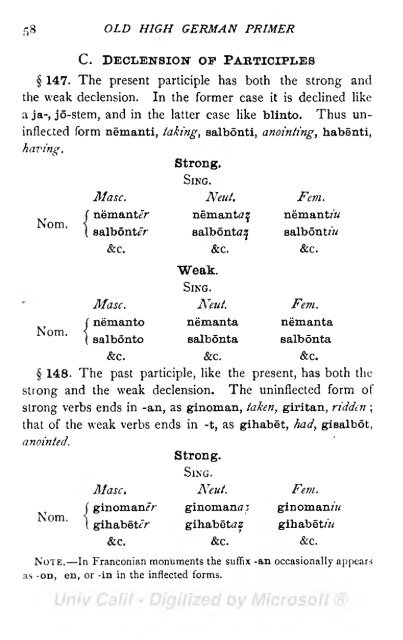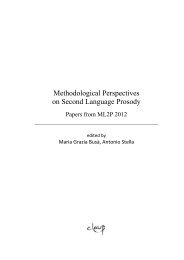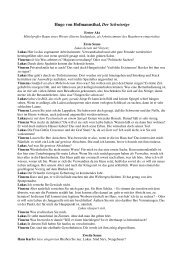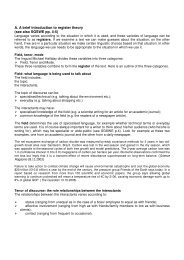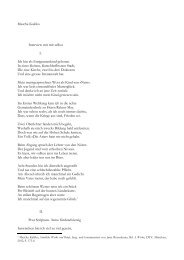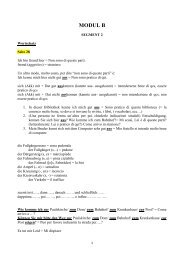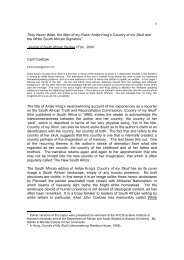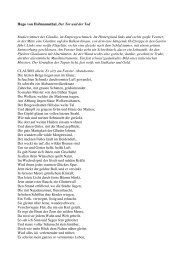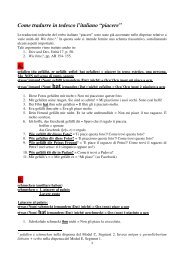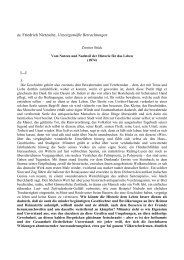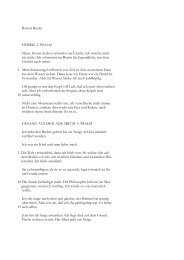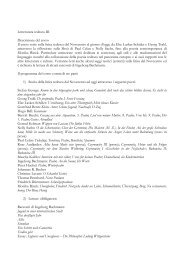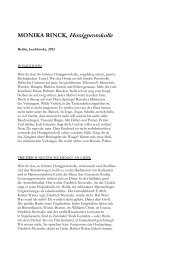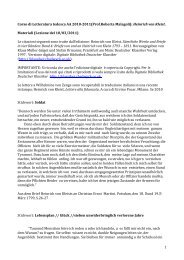You also want an ePaper? Increase the reach of your titles
YUMPU automatically turns print PDFs into web optimized ePapers that Google loves.
58 OLD HIGH GERMAN PRIMER<br />
C. DECLENSION OF PARTICIPLES<br />
147. The present participle has both the strong and<br />
the weak declension. In the former case it is declined like<br />
a ja-, jo-stem, and in the latter case like blinto. Thus uninflected<br />
form nemanti, taking, salbonti, anointing, habenti,<br />
having.<br />
Strong.<br />
SING.<br />
Masc. Neut. Fern.<br />
Nom.<br />
( nemant^r nemantaz nemantzw<br />
\ ., _<br />
( salbonter salbonta<br />
., _<br />
.<br />
,<br />
Balbontm<br />
&c. &c. &c.<br />
Weak.<br />
SING.<br />
Masc. Neut. Fern.<br />
( nemanto nemanta nemanta<br />
I salbonto salbonta salbonta<br />
fee. &c. &c.<br />
148. The past participle,<br />
like the present, has both the<br />
strong<br />
and the weak declension. The uninflected form of<br />
strong verbs ends in -an, as ginoman, taken, giritan, ridden ;<br />
that of the weak verbs ends in -t, as gihabet, had, gisalbot,<br />
anointed.<br />
Strong.<br />
SING.<br />
Masc. Neut. Fern.<br />
( ginoman/r ginomanflj ginoman;//<br />
I gihabetfr gihabetaz gihabet/w<br />
&c. &c. &c.<br />
NOTE. In Franconian monuments the suffix -an occasionally appears<br />
as -on, en, or -in in the inflected forms.


